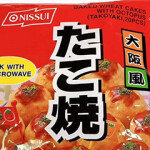United States and China reach agreement to deescalate trade war

The United States and China announced an agreement in which China will make structural reforms to its trading policies and strengthen its intellectual property protections in exchange for a reduction of current and proposed U.S. tariffs.
The U.S. will cancel its plan to implement another round of tariff increases later this month, and will reduce its 15 percent tariffs to 7.5 percent on USD 120 billion (EUR 107.9 billion) worth of Chinese goods. It will leave in place 25 percent tariffs on an additional USD 250 billion (EUR 224.8 billion) of Chinese imports, however, according to the Office of the U.S. Trade Representative (USTR). The USTR did not identify which goods would see reduced tariffs.
In a series of posts on Twitter, U.S. President Donald Trump called the so-called “Phase One” agreement “an amazing deal for all.”
“We have agreed to a very large Phase One deal with China. They have agreed to many structural changes and massive purchases of agricultural product, energy, and manufactured goods, plus much more,” he said.
Negotiations on “Phase Two” will begin immediately, Trump added.
“President Trump has focused on concluding a Phase One agreement that achieves meaningful, fully-enforceable structural changes and begins rebalancing the U.S.-China trade relationship. This unprecedented agreement accomplishes those very significant goals and would not have been possible without the President’s strong leadership,” U.S. Trade Representative Robert Lighthizer said in a press release.
Following the announcement of the agreement, China is reconsidering whether to continue with a plan to introduce tariffs on USD 75 billion (EUR 67.3 billion) in American goods, previously announced in August and scheduled to go into place on Sunday, 15 December, according to Liao Min, deputy director of the office of China’s Central Commission for Financial and Economic Affairs.
“China hopes the US will fulfil its commitment,” Liao told the South China Morning Post. “Removing tariffs is the core concern of China.”
China Vice Commerce Minister Wang Shouwen said in a press conference in Beijing on 13 December the agreement will result in additional intellectual property protection and a change in rules regarding technology transfer, as well as a purchase of U.S. agricultural products. Before the agreement is finalized, both countries must sign off on a legal review of its text, he said, according to the Morning Post.
“The deal can help expanding economic and trade cooperation between the two nations and effectively manage the trade disputes,” Wang said.
Wang told the Morning Post that China and the U.S. held in-depth discussions on protection of intellectual property and regarding counterfeiting on e-commerce platforms, and had reached a tentative agreement on steps forward. The USTR statement claims that the agreement “establishes a strong dispute resolution system that ensures prompt and effective implementation and enforcement,” but China has yet to detail how it will change its current enforcement regime.
Additionally, China Vice Agricultural Minister Han Jun said the agreement will result in China importing more U.S. pork and poultry, which are urgently needed to stabilize China's domestic needs, according to the Morning Post.
Those purchases align with the USTR statement claiming China had also agreed to make “substantial additional purchases” of U.S. agricultural goods. That will likely include increased purchases of soy, Han said.
In a press conference at the White House, Trump said the remaining U.S. tariffs on Chinese goods will be used as leverage “for future negotiations” on the “Phase Two” portion of the deal.
“Because China would like to see the tariffs off, and we’re O.K. with that, but they’ll be used as a negotiating table for the phase-two deal,” he said.






Share